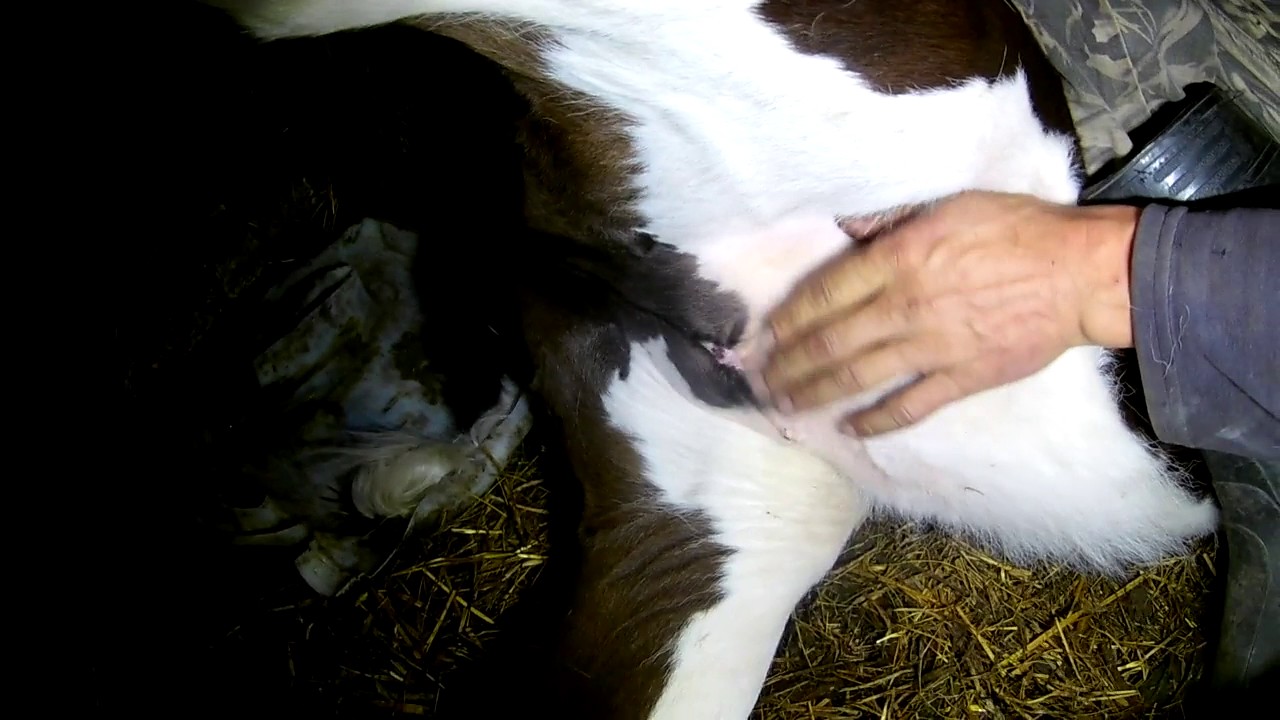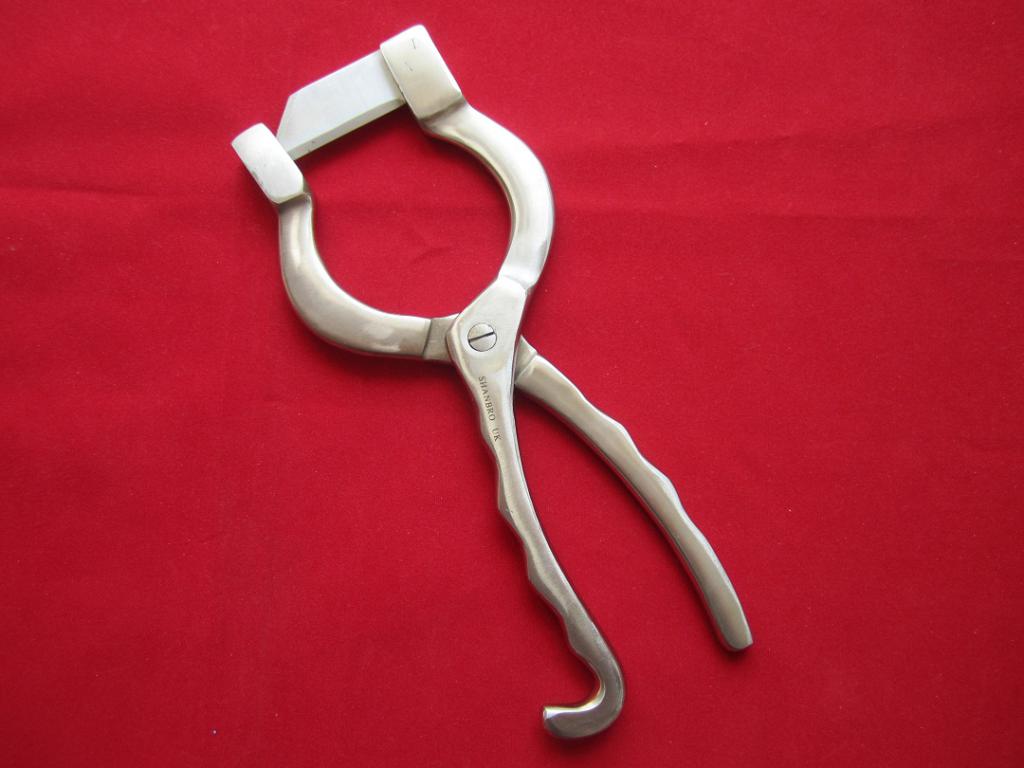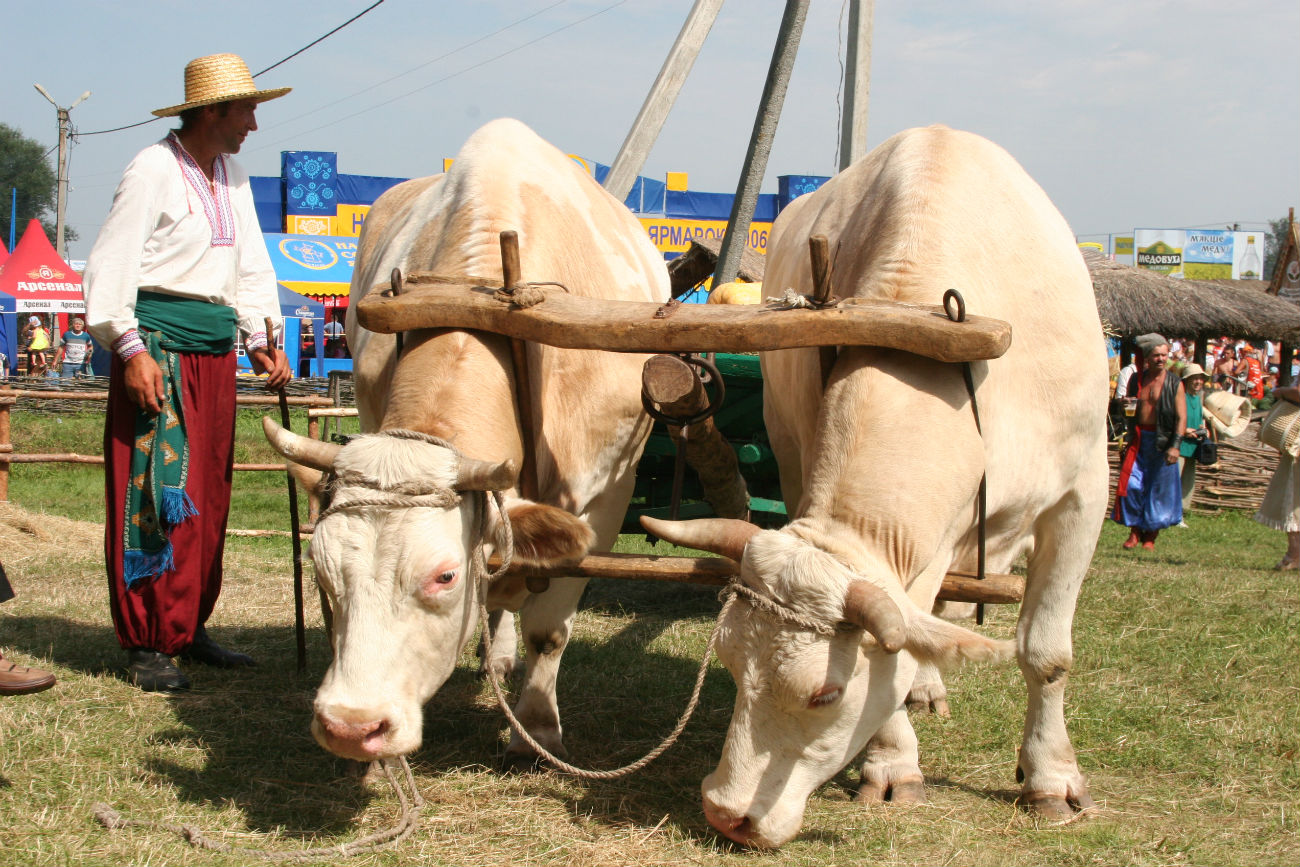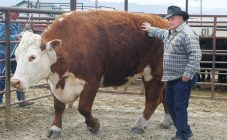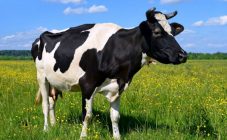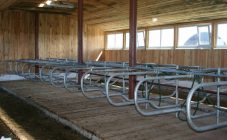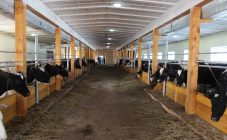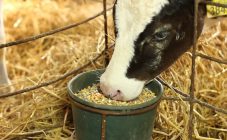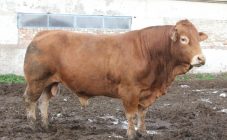Content:
The use of oxen on a farm can be very beneficial. The article describes what this animal is, how the castration procedure takes place, and what benefits a farmer can get if he has oxen.
Description and characteristics of the ox
The first domestic bulls in antiquity came from wild animals. During archaeological excavations, scientists find the remains of skeletons and heads of domesticated aurochs. It is believed that in the European region, the process of domestication and use of such cattle began its origins approximately four and a half thousand years ago. Since that time, drawings have been preserved that depict the taming of wild tours.
Bulls play an important role in the farm:
- They are used to produce meat that can be sold on the market.
- They can be draft.
- Bulls are kept for insemination of cows.
To replenish the herd, not so many of these animals are needed, the ox is more suitable for the performance of the other listed functions. An ox is a castrated bull. If such an operation is performed on a bull, it can change a lot.
First of all, the character and manner of behavior of the animal change. He becomes calmer, behaves more obediently, compared to the bull. There are no excesses with oxen, which are expressed in outbursts of wild and unbridled behavior. Their coat becomes smoother.
Another important feature that they have is that the ox is an animal that has stronger bones than bulls. These animals are not only stronger, but also characterized by greater endurance and physical strength. When used as a draft force, this quality plays a particularly important role.
The ox builds up its weight with greater speed, greater intensity, compared to the bull, while having a much more flexible character.
The appearance changes too. The ox's horns grow faster and become larger than before the operation.
What it looks like, the origin
This is what an ox is, what it looks like - he must have:
- long and heavy head;
- muscular neck of medium length;
- the withers of the ox should be high;
- the chest is broad, well developed and muscular.
In order for the ox to have a steady and free step, the legs must be straight, thick and bony.
If an ox is fattened for slaughter, then it is necessary that it has the characteristics of a good beef cattle, for example, it should have a wide rump.
His meat is more tender and fatty when compared with bull meat.
Why castrate bulls
The ox is in some ways more beneficial than the bull.
It is usually castrated for the following reasons:
- If the bull performed chores, but eventually became incapable of this, that is, he retired. In this case, castration of the bull allows you to raise it for meat.
- Oxen - what are these animals? They are healthier, stronger and more resilient. As a draft force, they are more useful than bulls.
- The castrato bull has more tender and tasty meat.
If you need to use the ox for meat, then it is recommended to castrate before he turns one year old. Due to the fact that the operation takes place relatively early, the body has more opportunities to adapt to its new state.
Castration
When to have surgery
The age at which the operation is performed depends on the specific purpose for which it is performed:
- If you need to fatten a bull for meat, then it is recommended to castrate at the age of three months.
- Such a plan is also possible when the farm needs draft animals. When he becomes useless as a draft animal, he can be fattened for meat and slaughtered. In this case, the best time for surgery will come between one and a half to two years.
- It is possible that they plan to feed the bull for a long time. Then it is worth castrating when he is eight months old.
The season that can be considered the most favorable for castration is spring or autumn. During this period, it is more convenient to take care of the wound, because the temperature regime is more comfortable than in summer or winter, and there are almost no blood-sucking insects.
Preparation process
Even if outwardly the animal looks healthy, then before starting this procedure, several tests are taken from it:
- measure the temperature;
- check the pulse rate, respiration;
- it is necessary to examine the testes.
In the latter case, consider whether there are signs of hermaphroditism, cryptorchidism, dropsy or inguinal hernia.
Immediately before the operation, the bull is placed on a fasting diet for 24 hours. However, the animal is constantly watered. Directly when the time comes, water is taken from him.
The animal needs to be walked well and make sure that it completely empties its bladder and intestines. Then it is thoroughly cleaned and thoroughly cleaned in the stall.
Usually, the operation is performed in the morning.
Castration
Before proceeding, the bull must be immobilized. To do this, it either needs to be knocked down and tied, or tied to some object. In the latter case, a strong fence is often used in the village for this.
It is important that the veterinarian performing the operation is free to perform the necessary actions.
There are the following methods of performing the operation:
- Open way. In this case, the skin of the testicles is first pulled, then an incision is made. Ovaries are taken out through the hole and a ligature is placed on the cords, which squeezes them tightly. An incision to remove the ovaries is made below it.
- There is a bloodless option. In this situation, a loop is placed on the outside of the scrotal neck. Sometimes rubber rings are specially designed for this purpose. The loop is twisted very tightly with two sticks. A five-minute exposure is enough for the testes to gradually dry out in the future.
- Forceps are used to castrate young bulls. At the same time, an incision is made in the scrotum and with their help, the cords are squeezed for a minute, then abruptly moves down two centimeters. In this case, the spermatic cord in this child is finally squeezed and then gradually will dry out.
After operation
The oxen are kept in a clean and dry stall for two or three weeks, and the wounds received during the operation are treated. If necessary, an injection syringe will be used to reduce the inflammation of the wound. Food during this period should be moderate.
Ox functions on the farm
On the territory of Russia, the use of ox is more common in the southern regions of the country. For transporting cargo and as a draft force, oxen are used here more intensively, in contrast to horses.
When he is carrying a cart, his advantage over bulls is as follows:
- This is what an ox looks like, compared to a bull - there is no aggressiveness in his character, no need to worry that he will suddenly show his rage.
- Its strength is greater than that of a bull of the same age and weight. Therefore, he can work with great strength in his work, and pull a cart with a load that may seem almost impossible to lift.
Oxen can also be compared with horses in this respect:
- Its strength is much greater.
- Oxen are much inferior to horses in speed.
I also need to add a few simple general notes about these animals:
- Oxen are more resistant than bulls to most diseases - how else an ox differs from a bull.
- Once they are no longer called draft, they can be fattened for meat.
- Oxen requires less food than other cattle of the same size and costs less to keep.
- In addition, cattle manure is a high-quality fertilizer, the ox produces it in greater quantities than bulls and horses.
Draft ox - what is it? It is believed to be able to easily carry a load that is approximately equal to its weight. In most cases, we are talking about 450-500 kilograms.
During the day, this animal is able to work for about ten hours. To do this, in the middle of working hours, he will need a break, which lasts from 2.5 to 3 hours. In autumn, the duration of daily work is reduced to eight hours, in winter it will be seven hours.
If the ox is harnessed to the plow, its speed can be 45 meters per minute. At about the same speed, this animal can carry a load exceeding its weight twice.
The ox is suitable for doing chores from the age of four until the moment when he turns fifteen.
How to care
When leaving, the oxen must be provided with proper nutrition. Only dry food should be served. It should consist of hay, straw (it is better to give them chopped), with the addition of cake, rye bran.
Several options for how to feed the ox in winter:
- 5 parts meadow and clover hay, 40 parts finely chopped beets, chopped straw - 6 parts, chaff and bran - 4 lb each.
- Another option for such a diet: hay - 8, chopped beets - 50, chaffs - 5, chaff or bran - 4 parts.
- You can also take 10 parts of turnips, 30 - pulp, 2 - bran and rapeseed cake, 5 parts of hay, 6 - chaff.
Oxen are used all over the world. They can be divided into two main types:
- humpless;
- humpback domesticated oxen.
The first category includes those that are common in countries with temperate or cold climates.
The humpback ox is divided into two types:
- Zebu has a hump at the neck.
- Sanga have a hump which is located slightly behind in comparison with the zebu.
Zebu live mainly in the tropical and subtropical zones. On the territory of Russia, humpback oxen are practically not used on farms.
It is believed that the presence of a hump is an adaptation of the species to hot habitat conditions. In this case, the fat layer with thermal insulation properties is concentrated in one place, and not distributed over the entire body.

